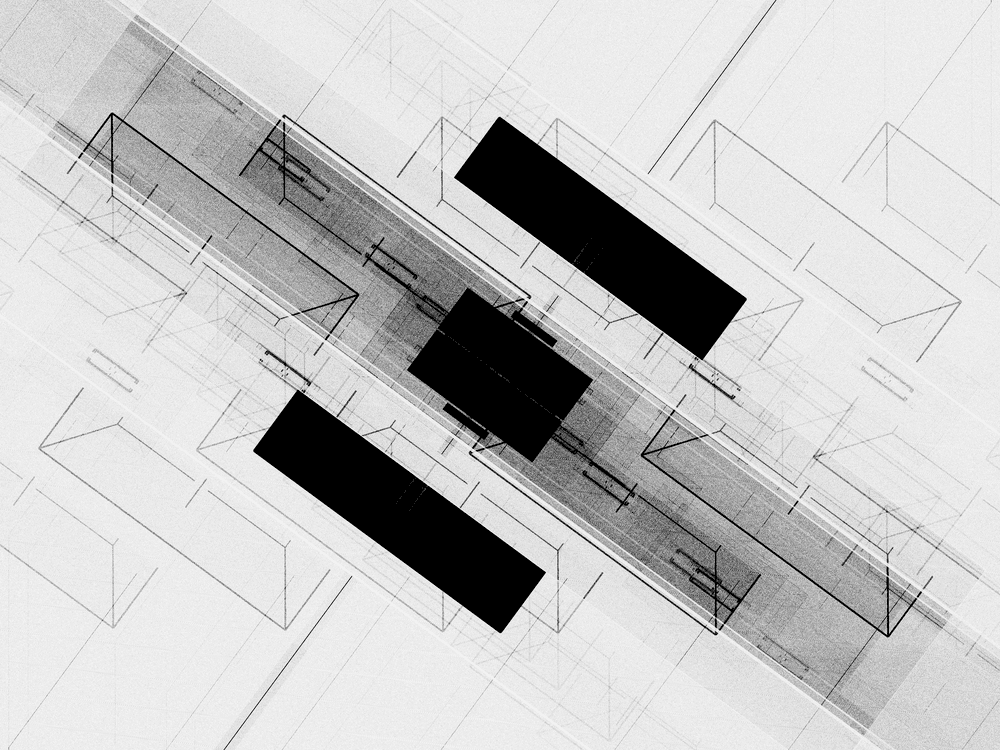Iskra Velitchkova’s ESCAPE with Silver Gelatin Printing
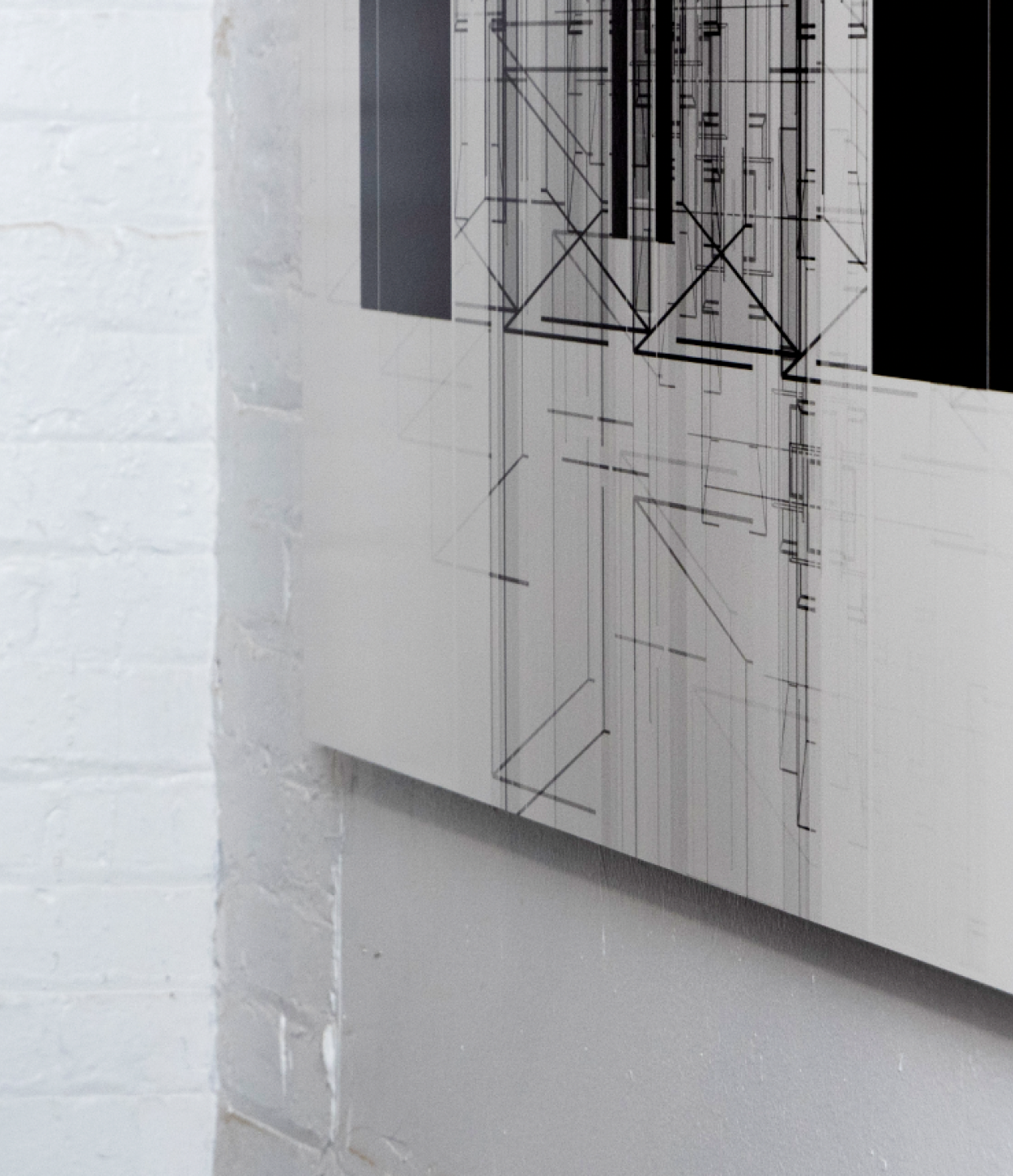
Iskra Velitchkova’s ESCAPE is influenced by analog photography and leverages silver gelatin to its fullest for its unique physical offering.
Photography has changed radically in the last 20 years -- moving from film, to digital printing, to social sharing, to lens-less post-photographic AI art. But in the midst of the churn, a centuries old, unapologetically black and white analog process has managed to adapt itself to the digital age and continues to deliver powerful images with a distinct look and feel: silver gelatin printing.
From Eadweard Muybridge’s motion studies, to Dorothea Lange’s Migrant Mother, to Chris Smith’s unforgettable portrait of Ali and the Beatles, silver gelatin printing has continued to find connection points with us over the years.

Eadweard Muybridge, Unnamed, 1878
Its ability to yield images with deep blacks, organic texture, and a timeless look continues to make it a vibrant, meaningful, and powerful technique that has distinct meaning and relevance in the modern era.
The Core Process
A silver gelatin photograph has no inks or pigments. It consists of microscopic silver particles bound in a layer of gelatin. This makes for a fade-resistant image with a life expectancy of 1,000+ years.
It is a manual process whose core process steps have changed very slowly since its introduction in the 19th century.
The foundations of the process, both in its early years and now, consist of taking a piece of photographic paper, exposing it to light in a certain pattern that activates the chemicals on that paper, and then passing it through three different chemical baths that reveal the image (development), arrest the development process (stop), and fix it to the paper (fix). We’ve all seen pictures of darkrooms with the infrared light. The regular light can be turned on after the fix bath.
The photo is then rinsed and hung to dry, and finally flattened.
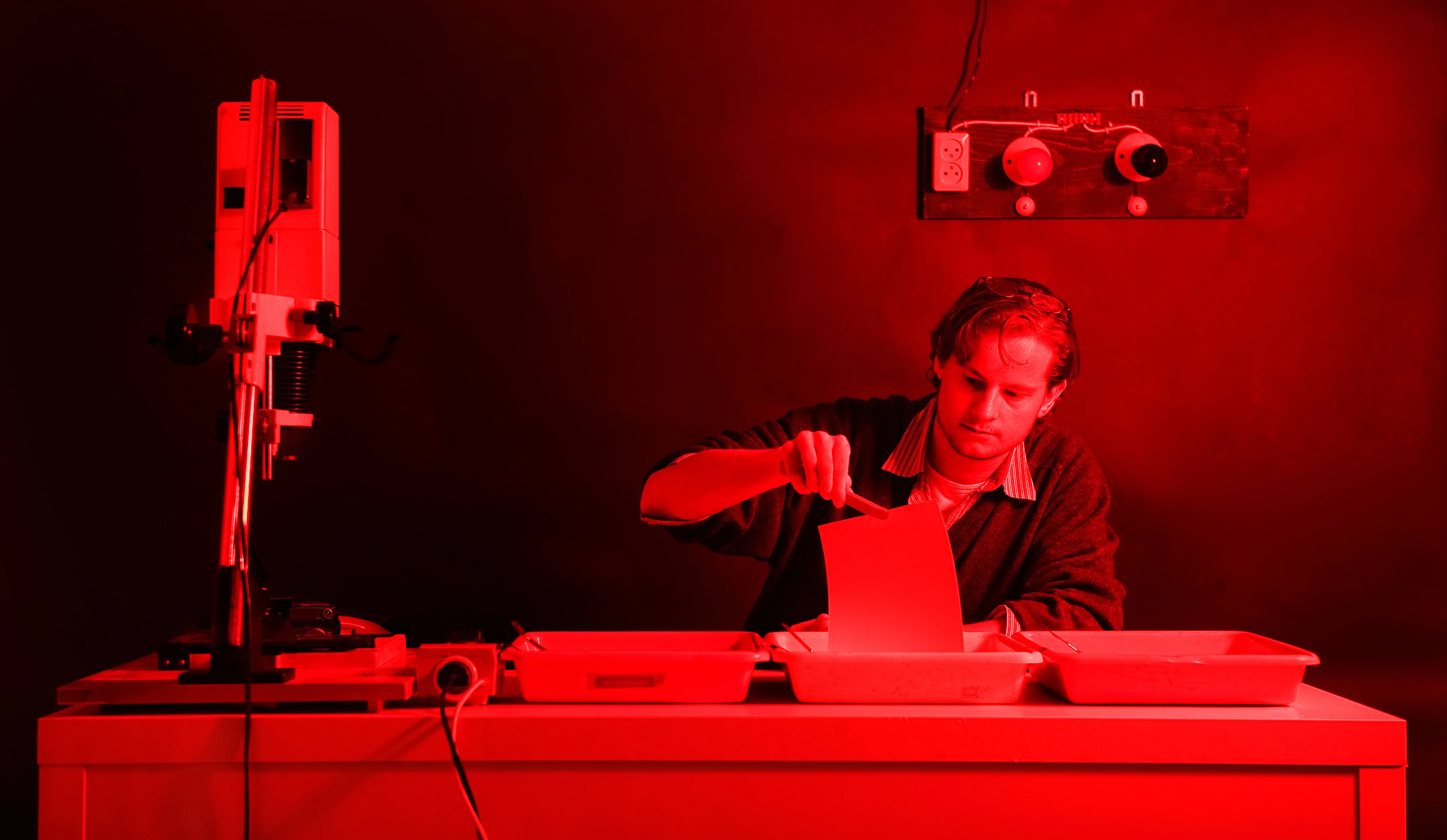
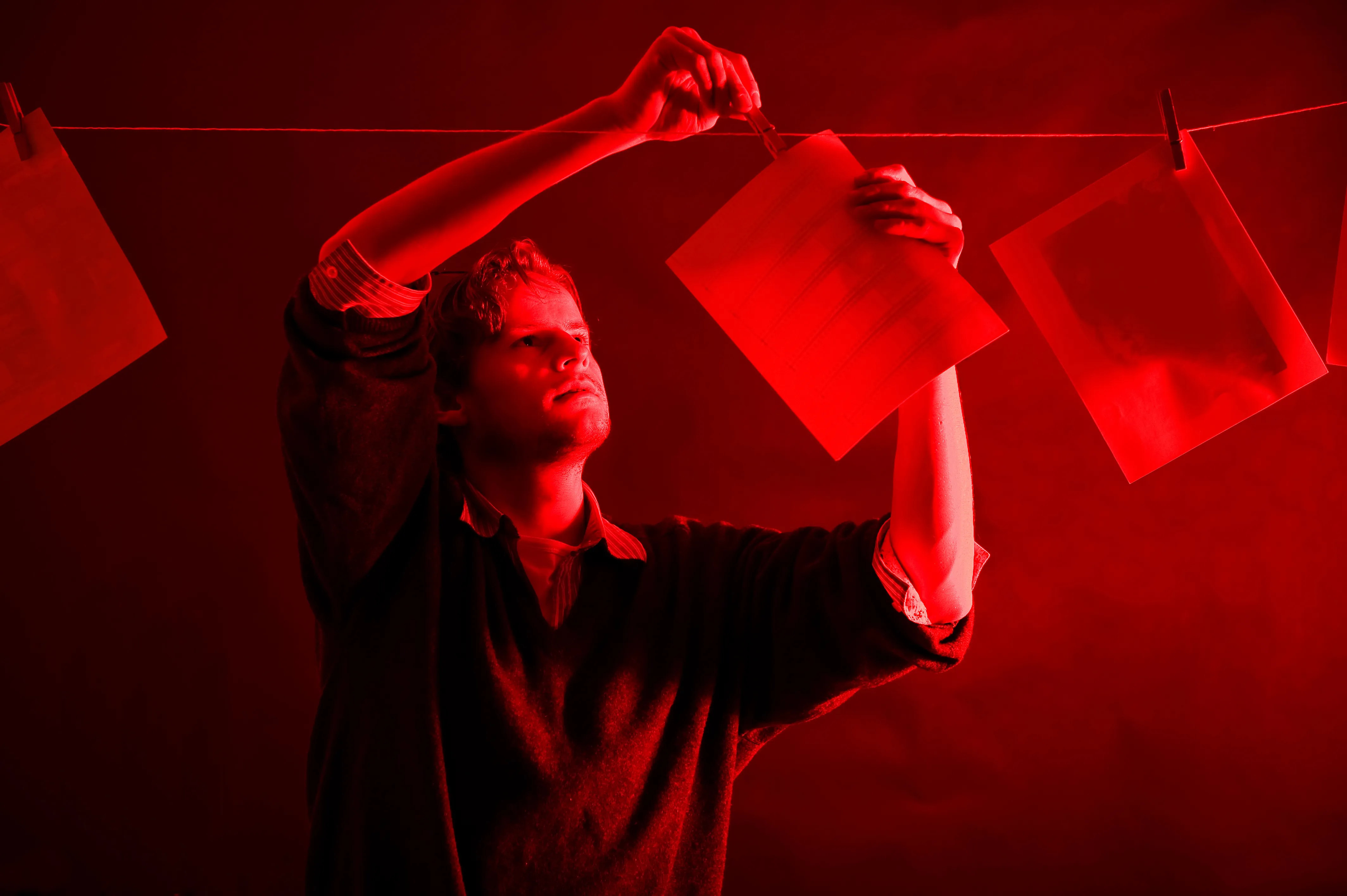
An enlarger projects an image onto a photographic paper, transforming the chemicals on the paper to produce a range of black and white colors (the machine on the left), and the photographic paper is developed in three chemical baths : development, stop, and fix. The photographs are then hung to dry.
Silver Gelatin Printing with a Digital File
The part of the process that has changed with the advent of digital cameras is how the image makes its way from the information source to the paper.
In analog photography, the information source is the photographic negative. That negative is mounted in a piece of equipment called an enlarger, a light is turned on behind it, and the light is focused through the negative and through a lens onto the photographic paper. The variations in the intensity of the light, which is what converts the photographic paper into various shades of black, grey and white, is governed by the negative and how much of the light it lets through.
In digital photography, there is no negative through which to pass the light. The information is held in a digital file. In order to transfer that information onto the photographic paper, a laser plotter is used.
Imagine a plotter that is holding a laser instead of a pen, with a sheet of photographic paper clipped into a frame beneath it. The plotter reads the digital file and — pixel by pixel — positions the laser correctly over the paper. It then emits the intensity of light that corresponds to the shade of that pixel in the digital file. Just like in the analog process, the intensity of each pulse of light generates a different shade of grey on the photographic paper.
After the process of exposing the paper to the light, the processes are identical.
Handling the Big Prints
In the case of ESCAPE the prints are very large: 3 mm thick, 36" high and 48" wide. Handling these prints requires significant skill and experience. Large sheets of paper are easily crinkled and damaged, and the development process can be uneven. Just hanging the prints to dry must be done very carefully to prevent warps and bends from being introduced.
Mounting
Finally, the 3mm print is mounted on a rigid substrate called dibond, an aluminum composite which is a strong, lightweight material commonly used as a cladding material in construction.
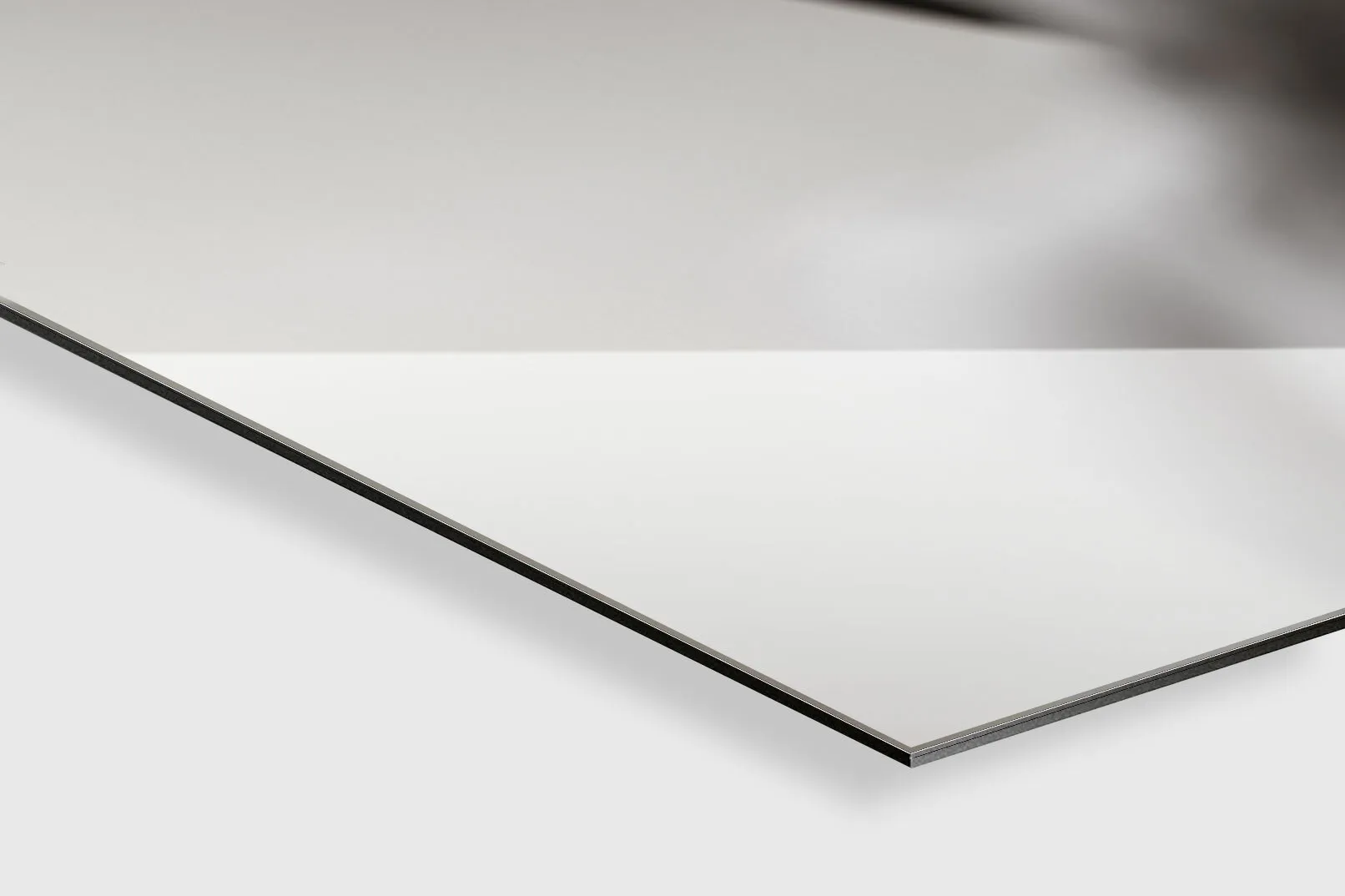
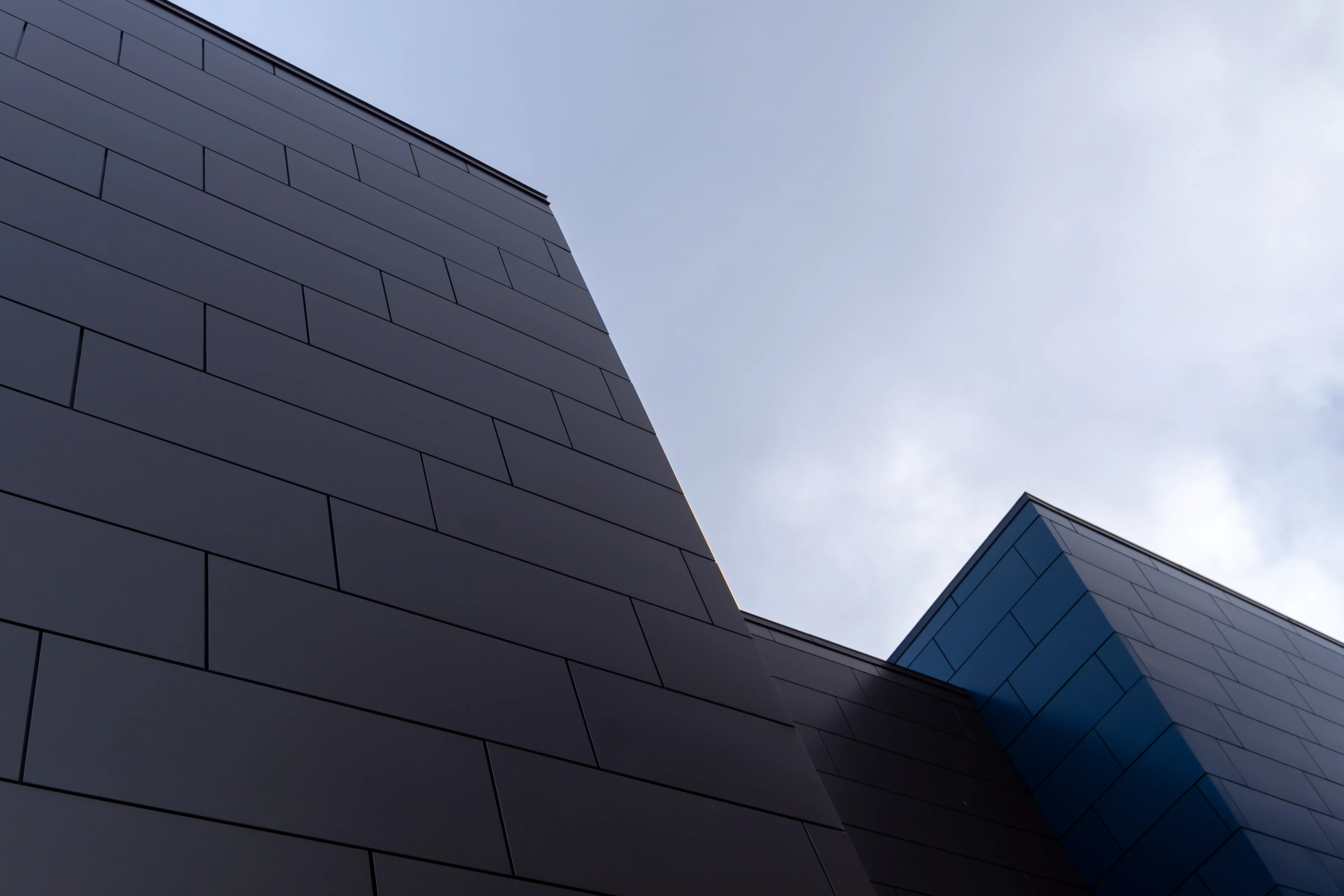
A wood or aluminum brace is attached to the back of the mounted print, allowing it to float away from the wall, seemingly suspended in mid-air. The aluminum substrate adds a contemporary edge to the classic, timeless look of the silver gelatin print.
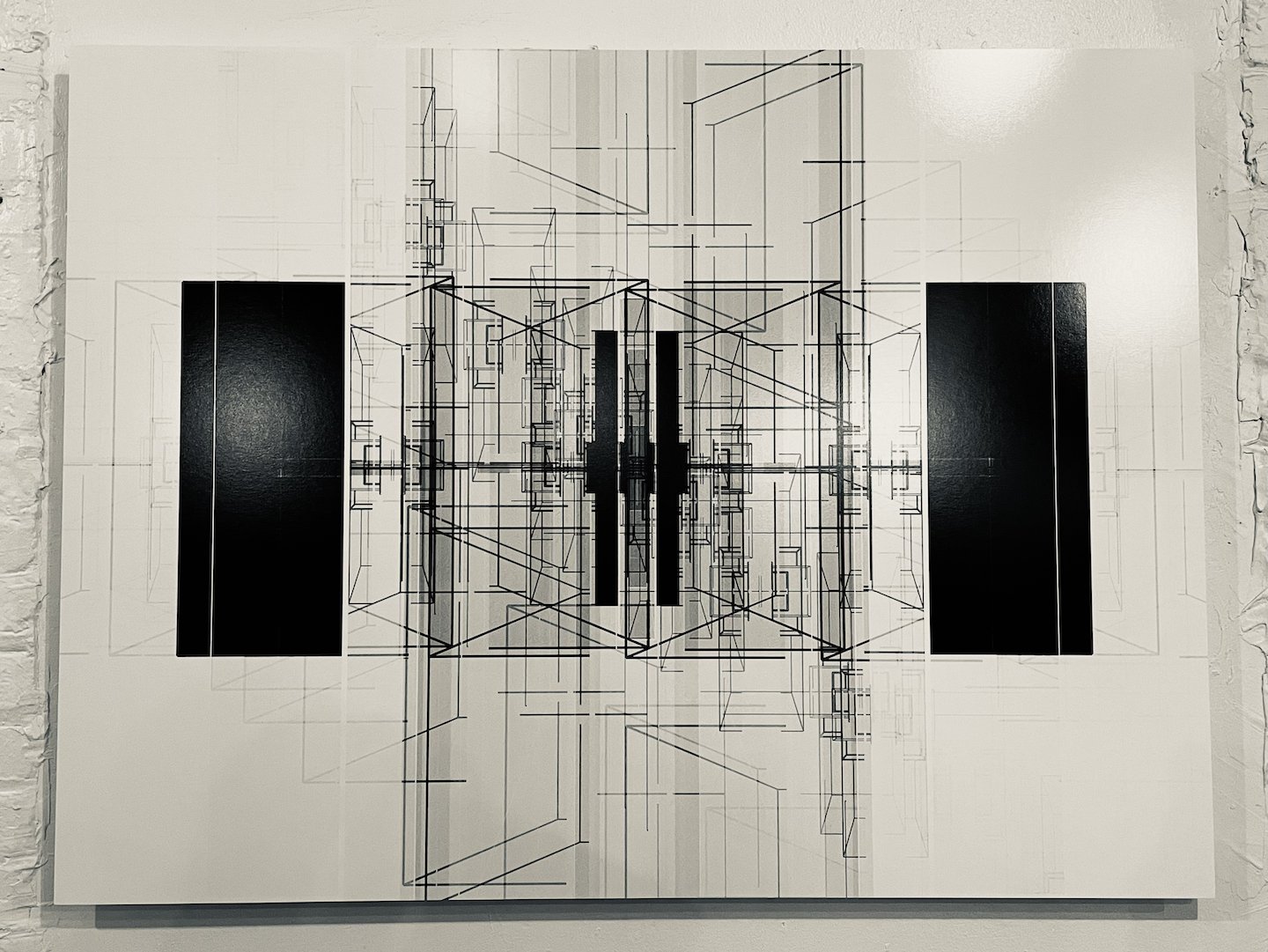
ESCAPE by Iskra Velitchkova
Silver gelatin print mounted on aluminum dibond, on display in NYC, May 2023
ESCAPE and Silver Gelatin
Iskra Velitchkova’s ESCAPE is influenced by analog photography and as a final extension of this investigation it leverages silver gelatin to its fullest, underscoring the powerful, austere and textured forms of brutalist architecture. It also reminds us that while ESCAPE’s creative methods are firmly in the cutting edge camp of algorithmic art, the visual impact it strives for cannot break free of the gravitational pull exerted by centuries of light, optics, and a manual process where paper is pulled through a tray of chemicals in a darkened room.
To learn more about acquiring a work from ESCAPE, please view the collection at tonic.xyz.
More stories
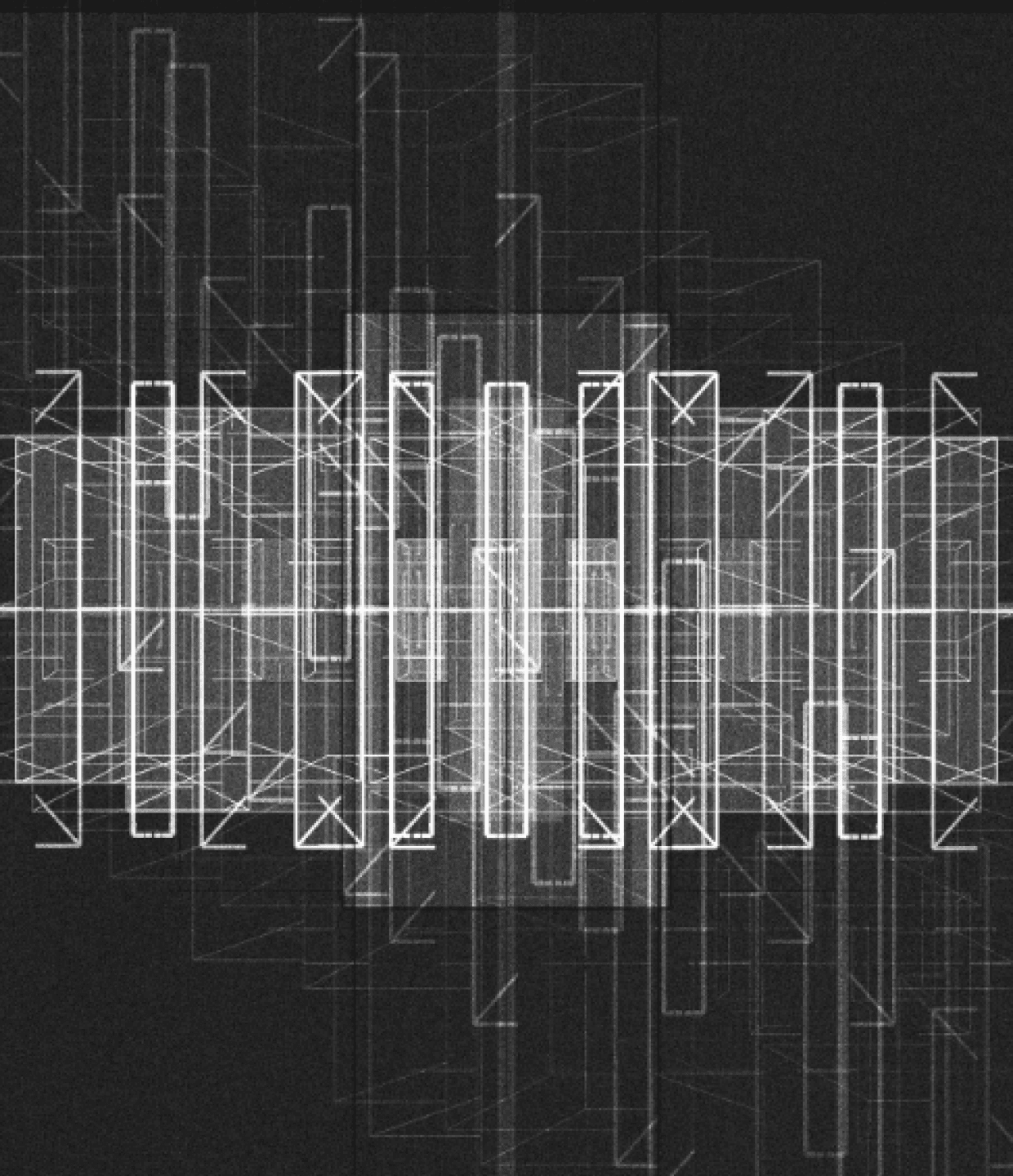
Introducing ESCAPE by Iskra Velitchkova
ESCAPE by Iskra Velitchkova is at once an archive of the artist’s personal history and a self-referential exploration of how we seek freedom and escape in art.
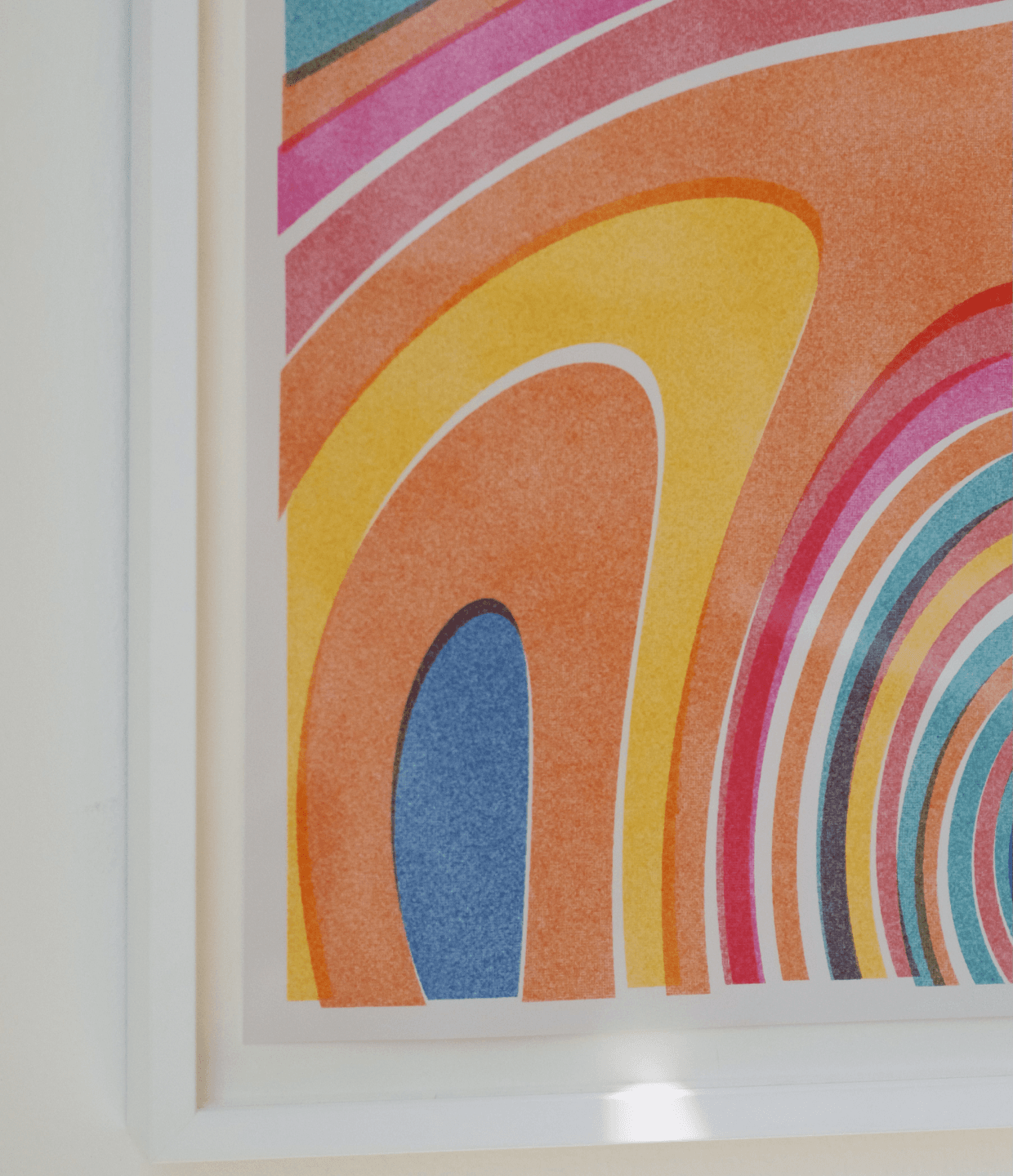
Features, Series, Compare & Contrast
Pointilism & Divisionism in Intimità and Interference
The experiments of Divisionist and Pointillist painters influenced our understanding of color and contrast, enabling new forms of artistic impression like the works of Phaust and Stefano Contiero.
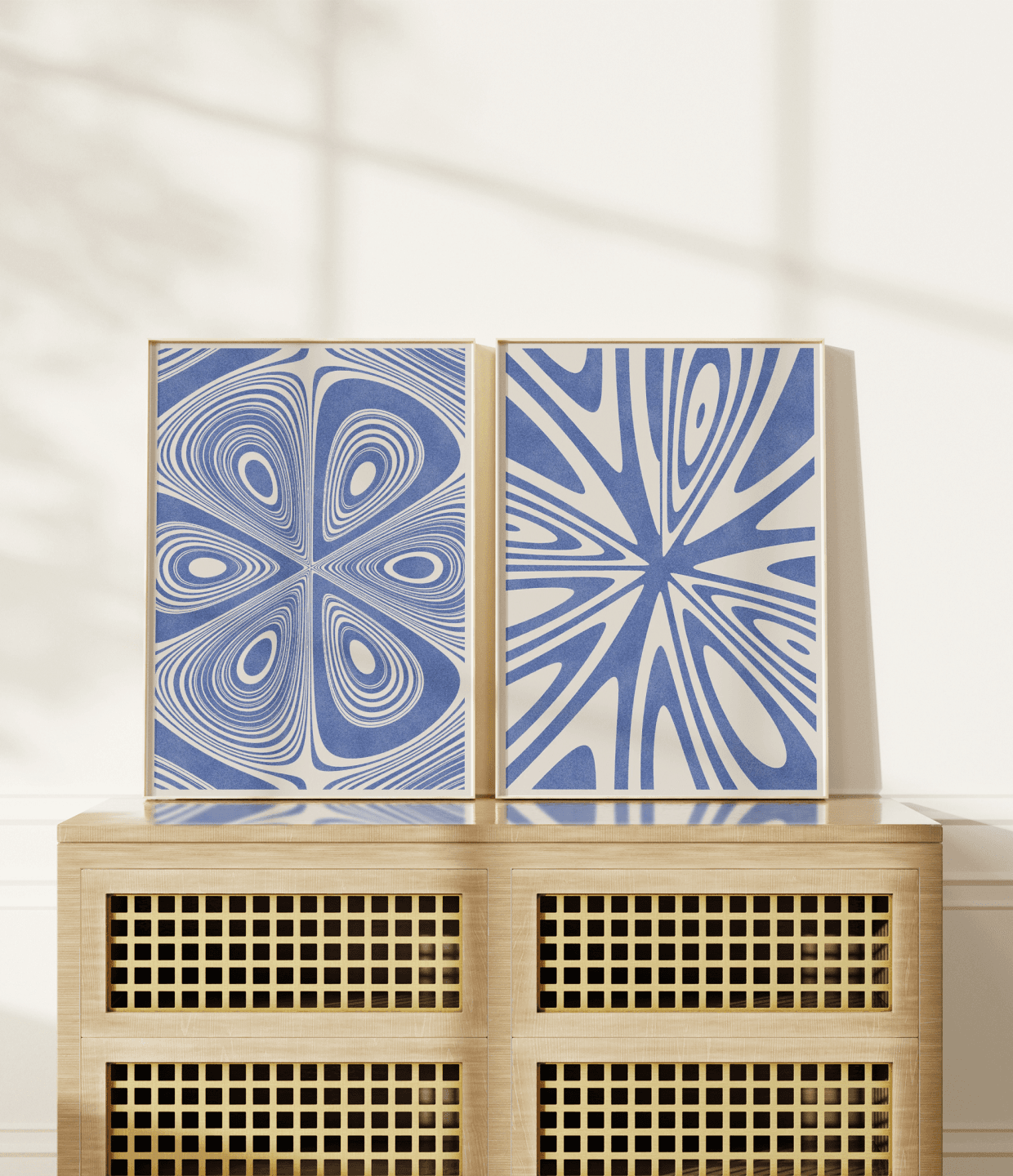
Features, Series, Interference
The Making of a Generative Art Algorithm: Phaust’s Interference
Each work in Interference is generated algorithmically through a series of transformations that elevate Chaldni patterns and risograph printing.


Stay in the loop on upcoming drops, exclusive access, and more.

